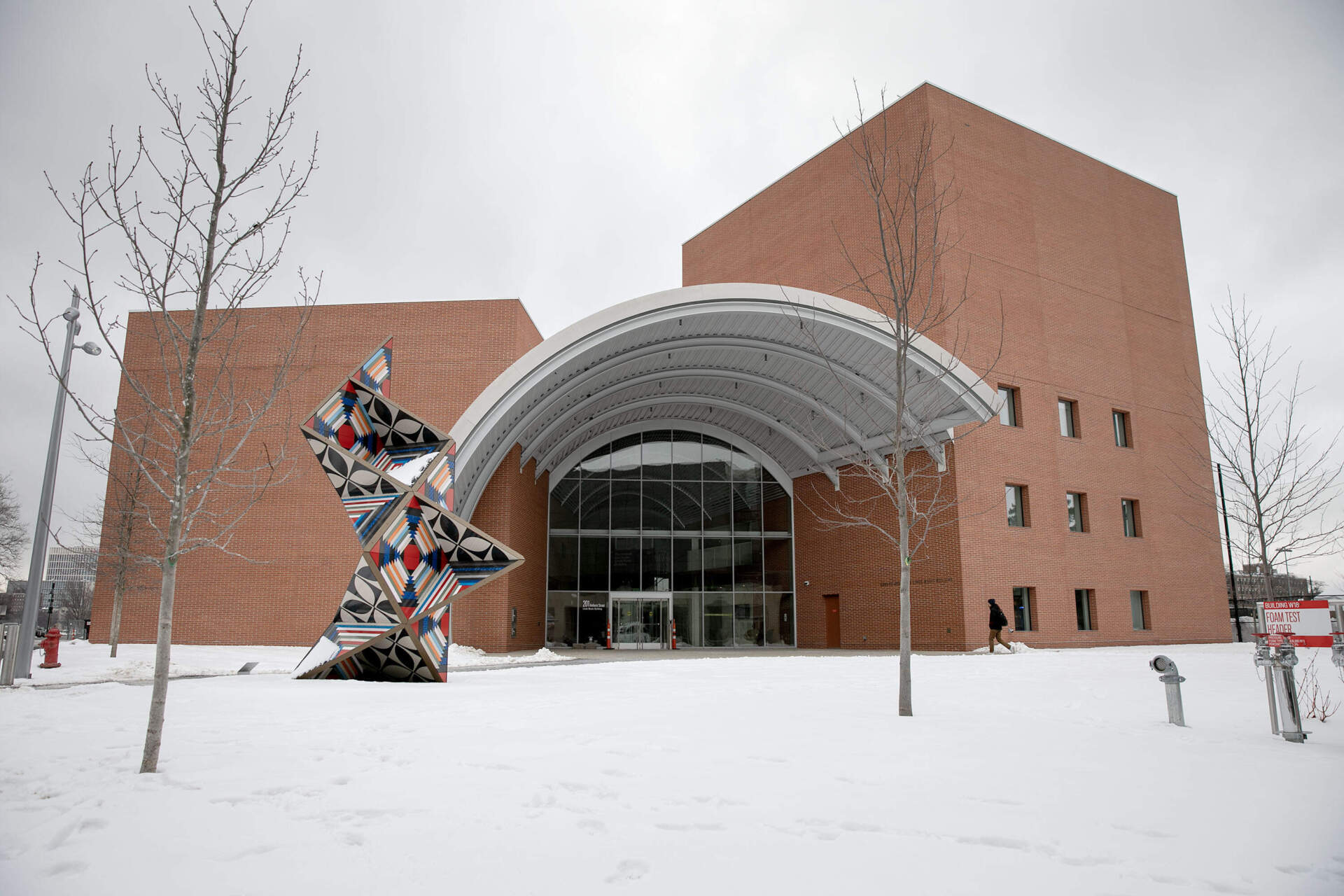Giant projections of eyes filled with dazzling constellations. An interactive, augmented reality poetry experience. A guided walk to rename MIT spaces with local Indigenous leaders.
These art-fueled experiences are part of MIT’s first Artfinity festival, running Feb. 15 through May 2. Students, faculty and staff will take part in concerts, augmented reality experiences, exhibitions, films and more. The festival is free and open to the public.
“It’s to show that the arts are very important and very central to the lives of people at MIT,” said Marcus Thompson, festival co-lead and professor of music.
The festival kicks off with “SONIC JUBILANCE” in the new Edward and Joyce Linde Music Building on Saturday night. The performance will feature four world premieres: Charles Shadle’s “Grace,” Keeril Makan’s “Madrigal,” John Harbison’s “Two Noble Kinsmen” and Miguel Zenón’s “Summit.” The night’s repertoire will cover classical, jazz, chamber music and traditional music of Senegal and Bali performed by vocal and instrumental ensembles.
Ahead of the performance, there will be a building open house. The Linde building was created to better support MIT’s conservatory-level music program, which teaches 1,500 students every year.

The center boasts a 390-seat concert hall, a pavilion for the college’s music technology and computation graduate program with rehearsal and classroom spaces, and a music and culture space designed with acoustics in mind for loud music traditionally played outdoors. The more than 35,000-square-foot center was designed by Tokyo-based architecture firm SANAA.
Thompson said he is looking forward to the opening performance. “It’s a way of just thanking MIT and introducing us… as a world-class place for people to study music and to do so in teams and communities,” he said. “It also brings in a community of listeners, and it’s our way of sharing this joyful moment.”
Thompson will also perform as part of the festival. He will play viola with the Boston Chamber Music Society in the Thomas Tull Concert Hall on March 16.
Behnaz Farahi, assistant professor at the MIT media lab, is spearheading “Gaze to the Stars,” an art project centering technology and humanity running March 12-14. Immersive pods equipped with AI will travel around campus to collect stories from participants whether it be future dreams or painful memories. The pods will record videos of the participants’ eyes, which will serve as the focal point of the project.
Advertisement
Farahi and her team will transform these messages into coded videos of the participants’ eyes with stars traversing their iris patterns. The resulting artwork will be projected onto the exterior of MIT’s Great Dome where anyone walking by can scan the image with a phone camera, similar to a QR code, and learn more about each person’s story.

Farahi said they hope to collect around 200 stories. She wants the project to also express how public art can be a vessel for social change. “My goal is to foster awareness, to foster social change, to foster a culture where it’s okay to also share the story of setbacks, stories of dreams are not always shiny,” she said.
Poet and researcher Monica Storss will bring “The Augmented Reality Poetry Machine” to MIT Memorial Lobby on March 5. The interactive poetry experience invites participants to develop poems with a live poet that will then be dropped into augmented reality environments. “The project bridges personal expression and technological mediation, creating a space where individual narratives become shared experiences through poetry, augmented reality, and relational aesthetics,” according to the event description.
Artists Devora Barrera Gonzalez and Claudia Tomateo along with Catherine D’Ignazio, an associate professor of urban science and planning, are working with local Indigenous leaders on “Reclaiming/Renaming MIT.” The project started with actions on Indigenous Peoples’ Day to rename locations across campus and reclaim the land as an Indigenous space. The programming has extended to Artfinity.

From Feb. 28-March 16, participants can join tribal leaders on guided walking tours. Each person will receive five cards and an edited map to rename spaces at MIT. Along the route, participants can drop their cards in empty name placard holders and write their work on the map. People are then asked to submit the new names to an online folder that will be compiled into a final art exhibition and book.
Along with two and a half months of programming, MIT recently unveiled “Madrigal,” a sculpture by Sanford Biggers outside the entrance to the Linde Music Building. The geometric sculpture draws from Biggers’ “Codex” series where he reworks antique quilts into new art pieces. The 18-foot-tall piece is named after a song written for several voices, connecting to the music to be made in the new building it stands next to.
“A lot of innovation comes from the arts. People think of innovation just in terms of technology, but there are lots of innovations and things that have come from experimenting with materials and telling stories,” Thompson said. “The idea is to bring the human dimension into the decision-making when you are sort of addressing problems and issues that are related to people.”
